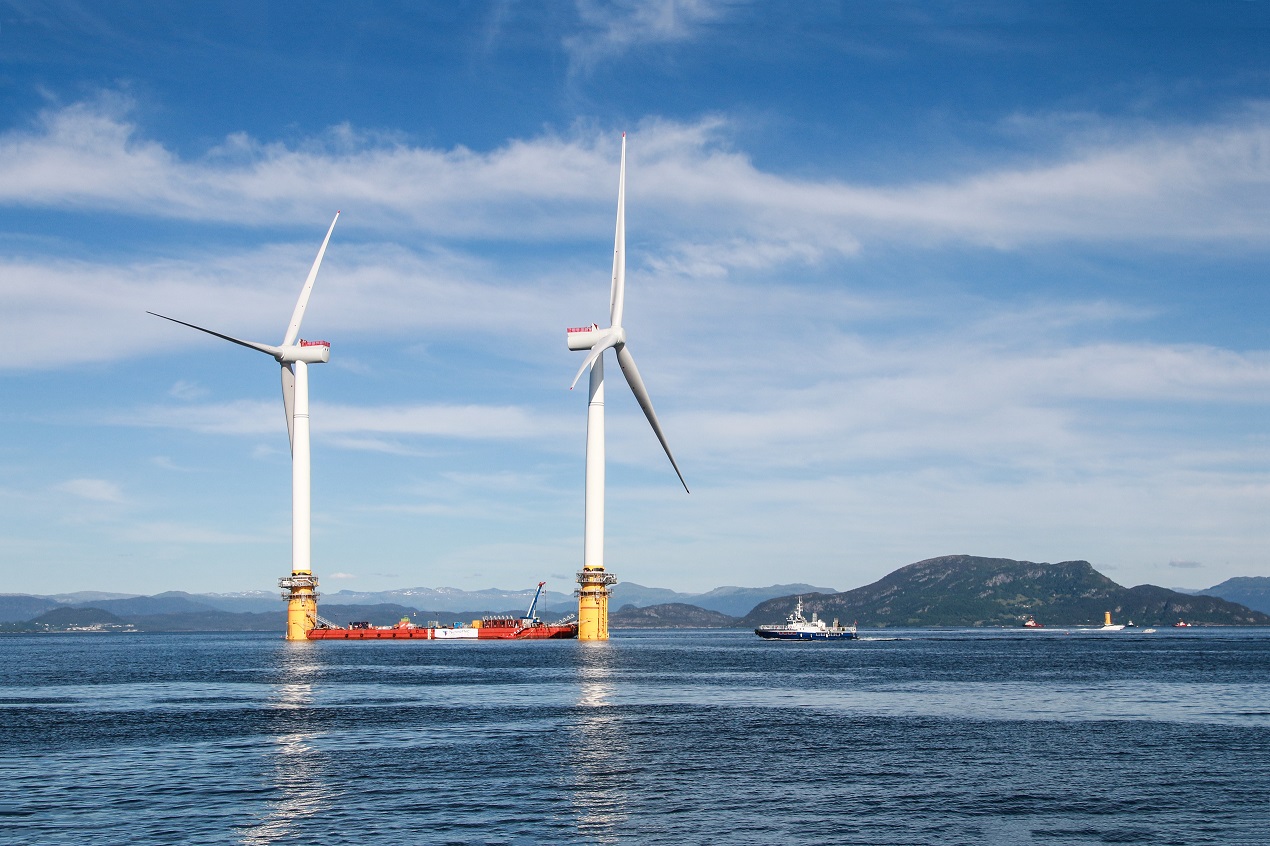The Energy Transition | Government announces results of record-breaking CfD AR6 auction
Published on 3rd September 2024
Welcome to our top picks of the latest energy regulatory and market developments in the UK's transition to net zero

This week we look at the record-breaking results of the CfD AR6 auction, Ofgem's recent consultations on the National Energy System Operator, SSEN's increase to the Transmission Impact Assessment threshold, UK wind generation capacity surpassing 30GW, and more.
Government announces results of record-breaking CfD AR6 auction
The Department of Energy Security and Net Zero (DESNZ) has today announced the results of allocation round 6 (AR6) of the contracts for difference (CfD) scheme. 131 projects combining an overall total capacity of 9.6GW across a range of technologies have successfully secured contracts under AR6. This represents the highest number of projects to receive funding in a single allocation round since the scheme's inception.
The overall budget of AR6 was £1.5bn, having been raised by the new government in August (as we reported here). This figure was significantly higher than AR5's budget of £227 million.
One headline result of AR6 is that, following the disappointment of allocation round 5 (AR5) which failed to procure a single GW of offshore wind capacity, over 4.9GW has been procured in AR6. As well as a combined 3.3GW from the new Hornsea Four and East Anglia Two phase one projects, this figure includes 1.6GW across seven projects with an existing CfD which had applied under the permitted reduction regime which allows developers to reduce the capacity of projects and re-enter the auction to secure a higher strike price. The strike price for new offshore projects has been set at £58.87/MWh, with the permitted reduction projects receiving a slightly lower price of £54.23/MWh (noting that these and the following strike prices listed are calculated on the basis of 2012 pricing, which should be multiplied by the CPI inflator to determine today's price base).
In addition, funding has also been allocated to the 400MW Green Volt floating offshore wind project, said to be Europe's largest, which has received a strike price of £139.93/MWh.
Of the successful applicants, the vast majority are solar projects, with 93 developments securing a strike price of £50.07/MWh and contributing a total procured capacity of around 3.3GW. The remaining capacity is made up of 22 onshore wind projects (with a £50.9/MWh strike price), and six tidal stream projects (at £172/MWh).
Secretary of State for Energy Security and Net Zero, Ed Miliband, noted AR6's success in comparison to the "disastrous" results of AR5, and described the allocation as a "significant step forward in our mission for clean power by 2030".
Chief Executive of RenewableUK, Dan McGrail, stated that "after the failure of last year’s offshore wind auction, it was essential that this auction succeeded and the fact that nine major offshore wind projects have secured contracts will increase investor confidence."
Ofgem and DESNZ consult on the National Energy System Operator
Ofgem has released consultations on the content of the National Energy System Operator's (NESO) business plan guidance and performance incentives framework. The NESO will be a new, independent system operator which will replace the Electricity System Operator (ESO). The body is a joint creation of Ofgem and DESNZ and is due to be established in autumn of this year.
In its performance incentives consultation, Ofgem has proposed to adopt a flexible approach. The ESO's performance is currently assessed across three roles: control centre operations; market development and transactions; and system insight, planning and network development. Its performance in those roles is then measured on five criteria, which include plan delivery and value for money. Ofgem proposes that, although the existing ESO evaluation method would capture NESO's overall performance, it should move away from using these distinct criteria. Instead, Ofgem believes the focus of its assessment should be a more holistic one, in considering whether NESO, "deliver[s] the most important outcomes and to a high quality." Ofgem will continue to require the NESO to publish information on key performance metrics, a stakeholder survey, and measure and report progress against its performance objectives. Responses for key stakeholders are sought on the changes to the performance incentives framework with a deadline for responses of 27 September 2024.
In addition, Ofgem has set out in its business plan guidance consultation that the ESO's current business plan (created in August 2022) will remain live until the end of March 2025. NESO will therefore need to submit a draft version of its plan in December of this year, with a final version due in January 2025. Ofgem will then consider and make a determination on the plan prior to its taking effect on 1 April 2025. The consultation seeks views on content which should be included in the business plan guidance, and the deadline to respond is also 27 September 2024.
DESNZ has also published its response to an Ofgem consultation published on 28 March 2024 on the NESO which sought feedback on two licences intended for NESO: an Electricity System Operator licence and a Gas System Planner licence. The response contains comments from 24 stakeholders, including transmission and distribution network companies and trade organisations, and seeks to address key concerns such as ensuring there is an, "effective and transparent framework for incentivising NESO's delivery of outcomes and efficient spending".
Meanwhile, DESNZ has issued a formal commission to the ESO, in advance of it becoming NESO, to provide practical advice on achieving clean power by 2030 for Great Britain. The commission requests the ESO's advice on a number of issues, including: different energy generation and demand mixes (and the assumptions that must be met for these to be deliverable); high-level assessment of costs, benefits, opportunities, challenges and risks; and key requirements for the transmission network.
SSEN raises Transmission Impact Assessment threshold to accelerate renewable energy projects
Scottish and Southern Electricity Networks Transmission (SSEN) has announced an increase in the threshold at which Transmission Impact Assessments (TIA) are required for new projects from 50kW to 200kW. This change aims to streamline the grid connection process for renewable energy projects in northern Scotland, facilitating quicker integration of renewable energy into the grid.
The new threshold aligns with limits across the rest of Scotland and will enable more projects to bypass the cost and time associated with TIAs. This adjustment is expected to benefit around 35 customers in mainland Scotland, allowing projects with a combined generating capacity of over 5MW to connect significantly earlier than previously anticipated.
Josh King, Chair of Solar Energy Scotland, commented that, "this move will be particularly beneficial for businesses in the North of Scotland, supporting them to decarbonise their operations and generate clean, affordable energy."
SSEN provided an example of the impact of this policy shift: a 130kW industrial connection project in Dundee, which was scheduled for a 2031 connection date under the previous 50kW threshold. As a result of the new rules, this project can connect to the grid as soon as it is ready, eliminating years of potential delay.
While the threshold increase applies to mainland Scotland, the previous 50kW limit will remain in place for the islands surrounding mainland Scotland due to transmission network constraints. SSEN will continue to monitor and review the TIA threshold, with a commitment to adjusting the limits as necessary to maintain network security and support the Scottish government's ambition of installing 4-6GW of solar capacity by 2030.
This strategic adjustment reflects SSEN's commitment to collaborating with industry stakeholders to remove barriers to increased renewable generation and storage, and accelerate the transition to clean energy.
New Shetland Islands wind farm pushes UK wind generation capacity past 30GW milestone
Renewable energy trade association RenewableUK has reported that, following the opening of SSE Renewables' Viking Wind Farm on the Shetland Islands, the UK's wind generation capacity has been boosted by 443MW and has reached the milestone of 30GW. Consisting of 103 turbines taking advantage of the Shetland Islands' strong wind resource, which is said to be the windiest in the country, Viking Wind Farm has the potential to generate around 1.8 terawatt hours of electricity per year, providing enough energy to power a city roughly the size of Birmingham. RenewableUK state that this makes it the most productive onshore wind farm in the UK in terms of annual electricity output.
The UK's operational capacity of onshore and offshore wind now amounts to 30,299MW, which RenewableUK state is enough to power over 26 million homes per year. Commenting on the development of wind generation in the UK, one of RenewableUK's Executive Directors, Ana Musat, noted that "It took 26 years to install the first 15GW of wind energy in the UK, so to double that to 30GW in just seven years represents a tremendous success for the industry."
While praising the achievement of the 30GW milestone and major role that Viking Wind Farm will play in the UK's net zero transition, SSE Renewables' Managing Director, Stephen Wheeler, emphasised that "we need to go faster if we’re to have a chance of delivering a zero-carbon energy system by the end of this decade".
ABP and px Group announce plans for Clean Growth Hub at Port of Barry
Associated British Ports (ABP) and px Group have announced plans for a Clean Growth Hub at the Port of Barry, a key facility for the South Wales' chemical industry. The plans will see an area in excess of 100 acres of the operational port transformed into a low-carbon, high-growth infrastructure investment area.
The site is encouraging businesses to register an interest if they are either: specialists in rare earth processing; involved in battery material manufacturing; are net zero manufacturers; or are developing carbon capture and utilisation business models. ABP and px Group have said that they aspire to create a thriving and sustainable industrial hub, building upon the low-carbon infrastructure already in place or in development. The port currently houses 5MW of solar generation capacity and there is further opportunity to increase solar and wind power generation on site. ABP also has a partnership at the Port with Hynamics, an EDF Group subsidiary, to develop low-carbon hydrogen production and distribution.
Henrik L. Pedersen, CEO of Associated British Ports, stated: “ports are at the heart of the UK’s green energy transition. This development ensures that Barry will play a greater role as we look to deliver a lower-carbon future." This development fits within ABP's overarching vision to transform its network of ports in South Wales to face the challenges of decarbonisation and generate substantial social, economic and environmental opportunities.
This article was written with the assistance of Khushal Thobhani, Jessica Sawford, Hannah Bradley, Charlotte D'Arcy and Luke Hopper, Trainee Solicitors.





